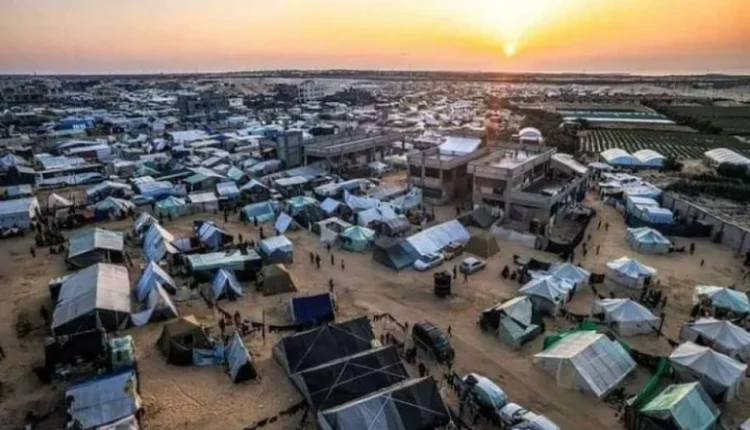Gaza Two Years After the Genocide: A City Without Water or Shelter
Beneath layers of dust and rubble, Gaza is suffocating in its own silence. Once a city alive with markets and laughter, it now stretches out as a wasteland to the horizon — its people searching for a sip of water or a roof to shield them from the cold nights and burning days.
The streets are now corridors of debris, and homes are no more than memories carved into the minds of survivors. Drinking water is contaminated, sewage systems destroyed, and schools that once echoed with the voices of children have become overcrowded shelters for families who have lost everything.
In the courtyard of a public school in northern Gaza, Mohammad Abu Ali, a man in his fifties from Sheikh Radwan neighborhood, stares at a barrel of dirty water shared by dozens of families.
“We came out from under the rubble with only our nightclothes,” he tells Palestine Newspaper bitterly. “We live with no doors, no mattresses, no clean water… and the children fall sick every day.”
Abu Ali once owned a three-story home that housed his sons and grandchildren — until an Israeli airstrike reduced it to ashes. Everyone survived, but nothing in their lives or memories did.
During what the Israeli army called “Operation Chariots of Gideon – Part II,” entire neighborhoods were wiped out, erasing the city’s features. In the same Sheikh Radwan area, Mohammad Ismail stood over the ruins of his home, which was engulfed in flames before the soldiers withdrew.
“They didn’t just burn our house,” he says, “they burned our hearts and our memories… even the water barrels melted from the heat.”
In the al-Karama area northwest of Gaza, Tamer Sharaf, a young father, struggles to light a fire using what’s left of his furniture to cook a simple meal for his children. Black smoke rises, mixing with dust and ash in an air too heavy to breathe.
“We walk for hours just to fill a few liters of water,” he says, “and even that doesn’t last a day.”
Gaza today is a city without homes, without water, without life. Amid the ruins, people try to build a home out of destruction and a homeland out of hope. Fathers patch up shattered corners to make makeshift shelters; mothers search for scraps of fabric to preserve a shred of privacy; children play among the rubble, unaware that the stones they climb once formed the walls of their rooms.
Every corner of the city holds a new story of loss, and every pile of rubble conceals a memory of a home that once embraced small dreams. With reconstruction equipment barred and roads still blocked, Gaza remains besieged by its own devastation, struggling to breathe beneath the ruins.
Yet even as destruction surrounds Gaza from all sides, life still pulses in its smallest details. In a city stripped of its water and shelter, its people refuse to vanish — breathing through the dust, rebuilding with unbreakable hope.
Gaza is not merely a city beneath the rubble; it is a living testimony to a people who refuse extinction, facing death with the will to live, transforming ashes into a promise of dawn — no matter how long the night.

